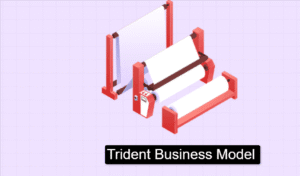
When Should Your Business Use Microservices Orchestration?
There’s a time and place for everything. Not only does that mean that microservices unity requires certain conditions to be salutary to a business — but it also is the core idea behind unity in the first place. When your microservices function without unity, a business can fluently fall into chaos.
5 Checkpoints To Lead You Towards The Right Direction
But how do you know that your business is ready for this type of unity? How do you know your business needs for its colorful services to be handled in a centralized manner, with everything from business sense to timing getting part of the master process? Well, you might not know.
Unless, of course, you come across a microservices unity roster that lays it all out for you to make the right decision. Then’s what we came up with for you
1. When You Should Use Microservices For Your Business?
One of the most satisfying qualifiers for a business that should use microservices unity is when the business has several microservices that are essential to its principal business affair.
Whether it’s a white- marker service or a exchange, in- house product, your principal business affair might bear colorful products to produce the end result. In that case, it’s always stylish to orchestrate microservices with a tool that makes the process simple to control and cover.
With commodity to fantasize the overall process, you can identify backups at colorful stages and microservices to address problems more snappily, rather than having to check each part of the process collectively. Again, if your business process consists of severalmicro-processes, unity is a result that can prop you greatly.
2. When Timing Is Crucial To Production
While some rudiments of a process can stay for other way to complete, there are some processes ormicro-processes that are sensitive to timing. Whether that means that product should be braked to await all finished factors, or whether that means you ’ll have to automate times for specific deliverables or microservices unity
.
accoutrements to come available during the process, unity can negotiate exactly that. With a set of rules that defines these timing constraints, you ’ll find your business suitable to carry out what it means to, without putting at threat any time-sensitive deliverables or coffers.
Everything can be orchestrated to keep the process moving at the rate that’s optimal for quality products on your end.
3. When You Need Business Logic Centrally Stored
Further than keeping in mind effects like timing and the number of factors within your process, you might have to consider how your business sense gets stored. When much of it’s stored within the operations and holders of your process, also its liability of being fixed in a timely manner depends on a lot of factors, including how complex the rest of the operation’s sense is.
In addition, you risk error or time loss every time your business sense requires an update, and in some business settings, that can be veritably frequently. So, if your business processes bear regular and harmonious updates to the business sense that’s essential to your workflow, you might need that business sense centrally stored.
While some keep this sense on a separate Business Logic Engine, you also have the option of using a workflow microservices unity tool to manage this law and to circulate it to the numerous microservices of your operation without important trouble at all.
This kind of microservices unity perpetration helps to exclude implicit crimes in the law updates, as well as to keep it stored independently from the functional sense that keeps each individual operation in working order.
4. When Your Process Uses Multiple Languages
The benefit of having multitudinous different microservices unity processes is that they’ve the capability to work singly on colorful tasks at their own defined rates, rather than counting on the time distributed after one specific step is finished.
All of these operations can work at the same time — but they frequently do n’t partake the same programming language, which means that some of the deliverables can suffer in quality if there is n’t a way to communicate duly between them.
In these cases, the options are limited you either are forced to manually handle the transfers between silos, to let them do and risk a loss of information, or to apply a language-agnostic system of information transfer between eachmicroservice.However, that’s because it is, If that final choice sounded like the stylish one to you.
It’s what a great workflow unity tool does for colorful microservices being used together to produce usable deliverables in each case without the solicitude of operation comity.
5. When You Want To Scale Your Business
It’s not fantastic to want further. Further guests, further workloads, further product. But you have to be prepared for it if you want it, and that’s why businesses who are looking to gauge their workflow to allow for further cases, advanced outturn, and overall better service to a broader followership all need microservices unity in order to produce the stylish possible process they can.
With the emphasis on outturn being so strong, it’s essential to know that your business process is innately designed to run with or without you behind the wheel — and that’s commodity an automated unity tool will fluently negotiate.
Conclusion
Having a microservices unity consolidated, tiered approach to the storehouse of your business sense and other essential programming makes the process much more secure in the event of commodity passing to a single vital element. Follow these five tips and use the microservices unity for the betterment of your services and business.


















Average Rating